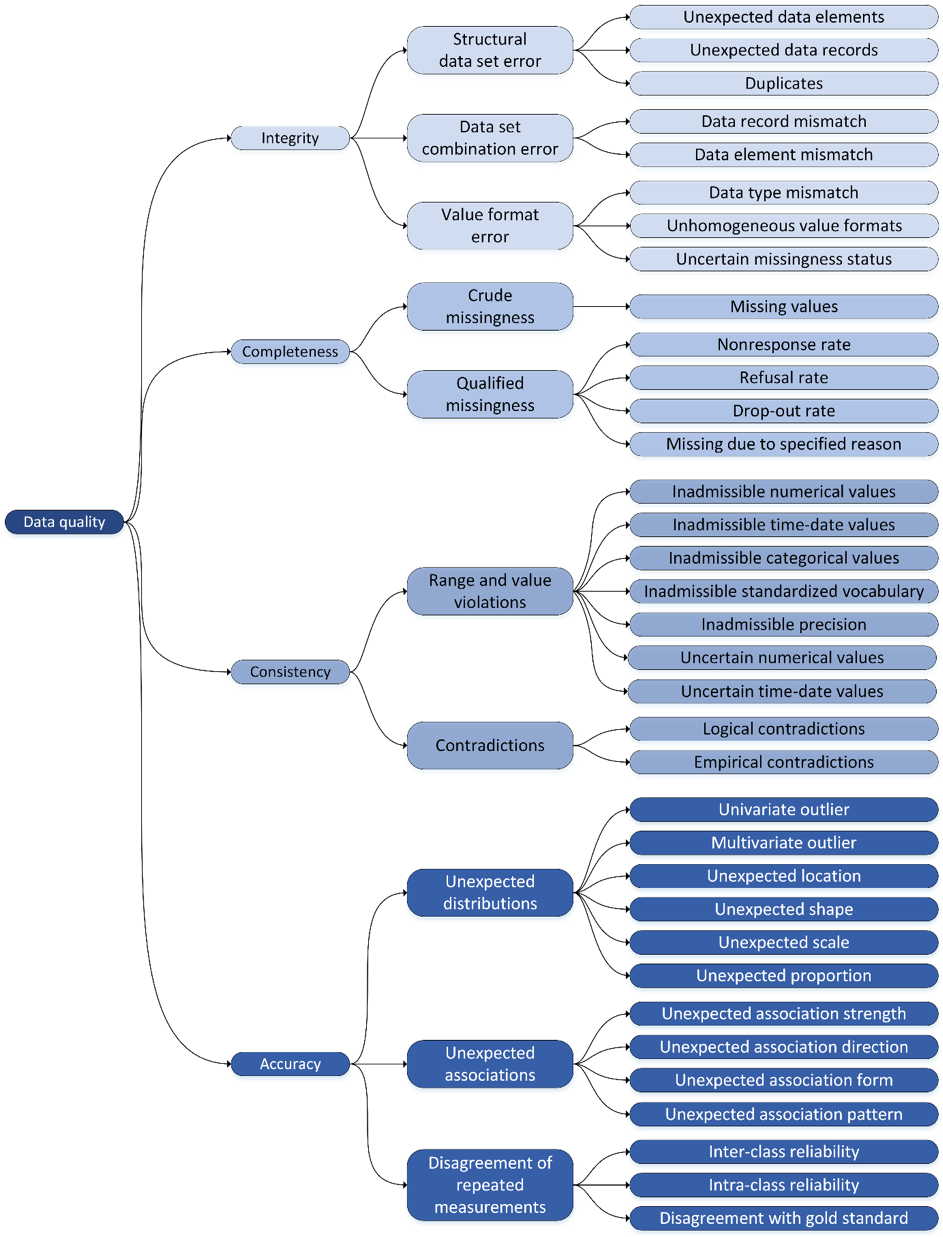Concept
Loading Tree…

Concept Tree Colored by Dimension. Please click to enlarge.
Data quality dimensions
The following overview illustrates the hierarchy of the data quality taxonomy. It comprises the data quality dimension at the top level.
To better orient users and to safeguard comparability to other concepts we distinguish four common data quality dimensions:
Integrity, targets the formal usability of data for analyses.
Data completeness addresses facets of missing data.
Data correctness is conceived as (1) consistency, which addresses the degree to which data values are free of convention breaks or contradictions and (2) accuracy, which denotes the degree of agreement between observed and expected distributions or associations.
The ordering of dimensions in our concept reflects a recommended workflow for data quality assessments. Integrity-related indicators are assessed first, followed by completeness and finally correctness-related indicators.
Links
Data quality domains
Within dimensions, domains distinguish sets of indicators with common methodological approaches. An example is “inadmissibility” within the consistency dimension, which specifically targets the compliance of observed values with permitted values or ranges.
Links
Data quality indicators
The following list provides an overview on the current working status of data quality indicators within the corresponding data quality dimensions and indicator domains.



